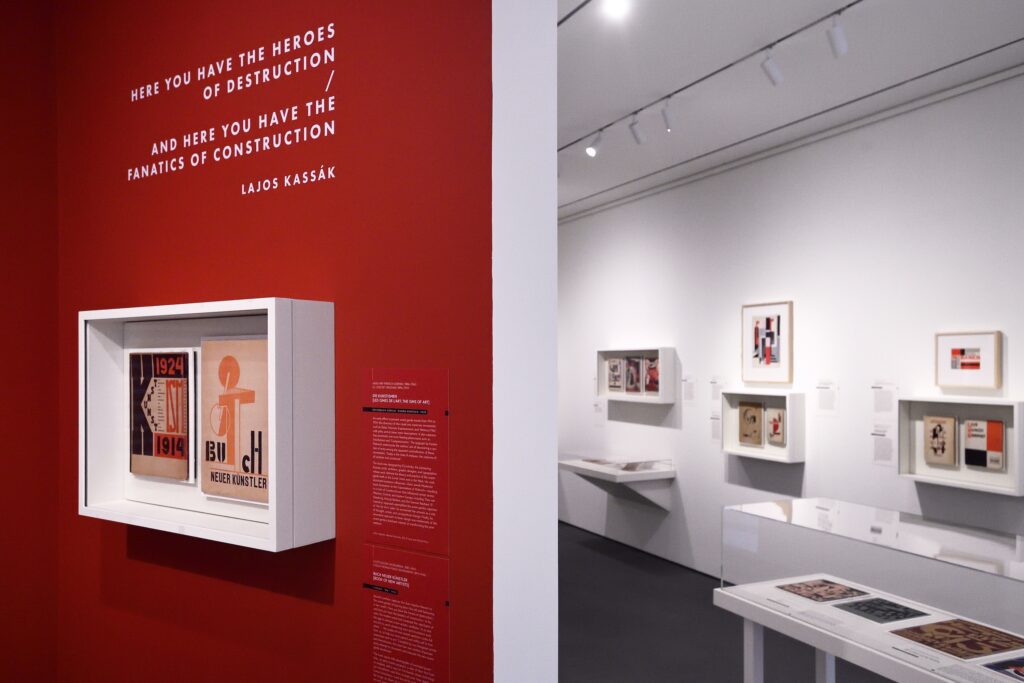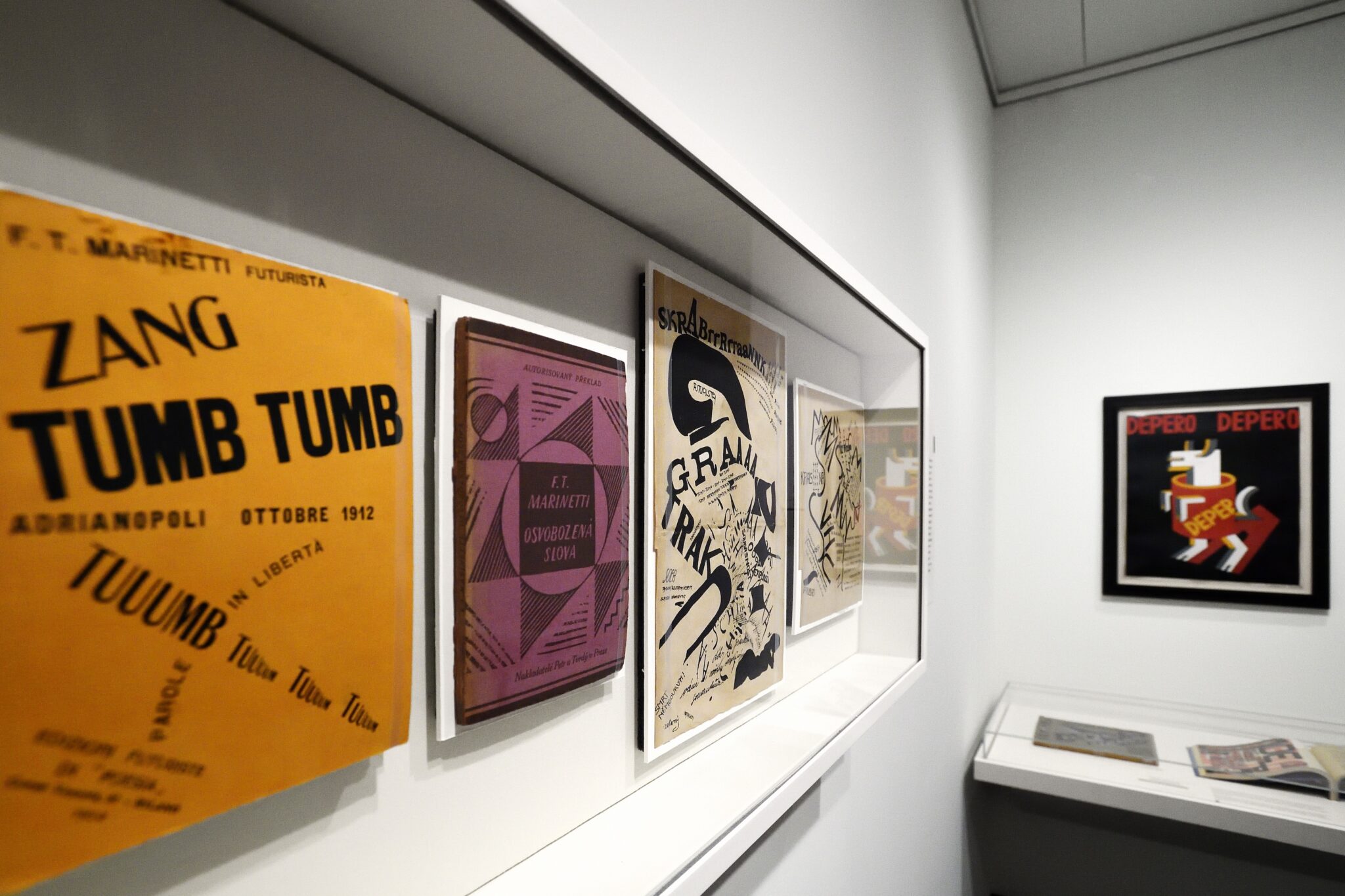Art and Graphic Design of the European Avant-Gardes Opens at the Frary Gallery
By • October 23, 2024 0 1482

By Sheila Wickouski
The Italian poet Filippo Tommaso Marinetti wrote in 1909 the “Manifesto of Futurism,” a call for artists to reject the past, “destroy museums, libraries and academies” and to celebrate the future of modernization.
Over a century later, his works are the starting display at The Irene and Richard Frary Gallery at The Johns Hopkins University Bloomberg Center opened with the exhibit “Art and Graphic Design of the European Avant-Gardes” on October 23.
Organized in chronological order, the exhibit focuses on the five significant and diverse modern artistic movements: Futurism, Dadaism, Suprematism, Constructivism and Surrealism. The movements emerged during the social and cultural upheavals in Central and Eastern Europe from 1910 to 1935.
The 75 rarely seen works on paper (books prints, photographs and ephemera) from Frary’s collection reveal the complex international network of these diverse avant-garde artists—spanning from Paris and Berlin to the Baltics, the Caucasus, Czechoslovakia, Poland, Romania, the Soviet Union, and modern-day Ukraine— who shared political, social and cultural concerns of the turbulent time of their lives.

Photo courtesy Johns Hopkins University.
Suprematism and Dadaism would follow Futurism, with artists forming new purpose in their work, sometimes in stark rejection of other avant garde movements yet all sharing in the denouncement of traditional governmental and cultural norms.
Constructionism would propose a sharp shift, rejecting their negativity to propose that the purpose of art was to help a create a new aesthetic for the demands of the modern world.
The media used for the creation of their art also took various diverse non-traditional forms such as Liubov Popova’s six multicolor linocut prints, Dutch artist Lou Loeber’s cardboard box object with multi-color geometrical gouache design in the manner of De Stijl (a movement reducing to the essentials of form and color) and an untitled artist book by Ivan Puni (1920)
Notable works include one of three known copies of a color lithograph by Aleksandr Rodchenko’s “Composition 73,” (Berlin, 1924) and works by Hungarian artist Lajos Kassák including, “Bildarchitektur” (Picture Architecture), an India ink drawing and a very early woodcut.
In the center space of the exhibit are works by surreal artists. Their dreamy world of hidden instincts and drives are a sharp contrast to the spheres, squares and triangles in red, black, grey and brown that dominate much of the works of the other art movements.
These photographs and collages resonate today, transcending classification that limit them to any era even as they present images that reflect a response to their time in history. Original photo collages from 1926 by Crimean-born graphic artist, designer, and actor Petr Galadzhev, with images of battleship and dances and clowns and athletes on stiff brown paper, are notable.
Throughout the exhibit are the rare treat of works by avant-garde artists impacted by preceding art movements, as well as those from lesser-known avant-garde publishing cultures in Armenia, Georgia, Latvia, Lithuania, Romania, and the former Yugoslavia, including a large group of extremely rare avant-garde and modernist books in Yiddish and Hebrew.
Theirs was a time of world wars and economic depression as well as great progress in science and technology. These artists issued manifestos and formulated movements in European arts that were often contradictory to other avant-garde ideologies of their time. Yet what this rare exhibit offers extends beyond their time, in offering a perspective of ideas and works that influenced art’s role in society to contemplate how that has influenced the art that followed and connects to our own time and global issues.

Photo courtesy Johns Hopkins University.
The Frary Gallery opens one year after The Johns Hopkins University Bloomberg Center opened in October 2023. This first exhibit will run until February 21, 2025.
The Johns Hopkins University Bloomberg Center which also features concerts and lectures throughout the year. More information can be found here.

